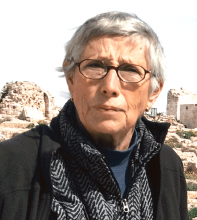You are here
Oslo Accords: Thirty years on
Sep 13,2023 - Last updated at Sep 13,2023
September 13, 1993, was a day of Palestinian jubilation and hope. During the signing of the Oslo Accord on the White House lawn in Washington Israel granted Palestinians a measure of self-administration, giving rise to the expectation that Israel would withdraw from most of the West Bank and Gaza and permit a Palestinian state to emerge.
I was in occupied East Jerusalem that day of the steps of Orient House, the handsome Husseini family mansion built in 1897 which became the headquarters of the Palestine Liberation Organisation in the city. A plump Palestinian boy scout climbed the steps and raised the Palestinian flag on a pole installed for the occasion. This simple ceremony violated the Israeli ban on showing the red, gree, white and black banner in the thrice holy city. Little paper Palestinian flags were distributed to the crowd assembled in the garden, multiplying the offense. When speechifying ended, Palestinian youths paraded a huge Palestinian flag down Salaheddin Street to Damascus gate to the Old City and hung it over the entrance. Israeli policemen stood aside; red roses were tucked into the gun barrels of a few. Palestinians who remained at home could watch the two scenes on split-screen television.
The next morning, accompanied by a photographer colleague, I drove a hire car to Jericho where Palestinian flags were flying from homes and shops. We asked people we met how they felt about the Oslo Accord, which had been negotiated in secrecy by Palestinian and Israeli teams with the mediation of Norwegian diplomats. While most Palestinians did not know what was in the accord, they welcomed the prospect of an end to the Israeli occupation.
We then made our way to Gaza, where Palestinians had danced in the streets after watching the signing while Hamas' supporters glowered from doorways. Critics, including the leading Palestinian intellectual Edward Said, were dismayed But were dismissed. PLO chairman Yasser Arafat understood the deal was flawed but believed once Israel began to pull out its forces, the process of withdrawing was irreversible.
On May 4, 1994, the second Oslo Accord was signed in Cairo. This agreement mandated Israeli military and police withdrawal from most of Gaza and the Jericho area in the West Bank and the establishment of the Palestinian Authority.
With Rabin's permission, Arafat returned to Gaza on July 1st, 1994, entering from Egypt via the Rafah crossing at the south of the narrow strip. This time I travelled with a Palestinian journalist to Rafah in a ramshackle taxi. As usual, Arafat was late. He walked from the Egyptian side to Rafah and kissed the ground of his country from which he had been exiled since 1968. He said a few words to Palestinians who gathered to welcome him before speeding in his motorcade to Gaza city where he addressed 70,000 people.
On July 5, I drove from Jerusalem to the Jordan Valley where Arafat helicoptered to Jericho, symbolically reclaiming the West Bank for the Palestinians. Few people were waiting: Many of them journalists. The draft from the helicopter rotors kicked up dust. Arafat was sworn in as head of the Authority.
On August 29, 1994, the Agreement on Preparatory Transfer of Powers and Responsibilities was signed by Israel and the Palestinians and on September 28, 1995, the Palestinian-Israeli Interim Agreement on the West Bank and Gaza was signed by Arafat and Rabin in Washington. This provided for elections to both the executive and legislative branches of the Authority during an interim period lasting until May 1999. The negotiations launched by the Oslo process staggered on until 2014.
The back story of Oslo began in secret early in 1993. At the end of August, Palestinian and Israeli negotiators initialled the first Oslo Accord. From the start the negotiations were heavily weighted in Israel's favour. Israel had the backing of the West, particularly the US. Israel possessed a strong standing army and was the most heavily armed country in the region and exerted full control of the Palestinian territories conquered in 1967. Israel had planted 115,000 illegal settlers in the West Bank and Gaza Strip and was determined to shape the agreement to keep them in place.
The Palestinians were represented by Ahmed Qurei, a leading figure in Arafat's Fatah movement, and Hassan Asfour, of the Palestinian People's Party who was an aide to Mahmoud Abbas, the godfather of the Oslo process. The Palestinians had little foreign backing, no army, and no authority in East Jerusalem which Israel had illegally annexed, the West Bank and Gaza. The PLO was also broke.
The main Israeli negotiators were Professor Yair Hirschfeld, the late Professor Ron Pundak and the late diplomat and politician Uri Savir. They were assigned to this task by peacenik politician Yossi Beilin, deputy foreign minister under realist Shimon Peres.
Early in September 1993, I flew to Tunis where I met Asfour who showed me the text of the Oslo Accord and related the alarming story of the negotiations. They dealt with Israelis who had top academic credentials and spoke good English. When stumped by English words or phrases, Asfour said that he and Qurei rang up members of a second Palestinian team conducting overt talks in Washington. The text of the 1993 Oslo Accord, which was a declaration of principles and not a treaty, reaffirms the principle of the inadmissibility of the acquisition of territory by force, but does not lay dowm full Israeli withdrawal from the 1967 territories or a settlement construction freeze.
Under Oslo, Israel's illegal settlements were to remain and expand until Palestinian-Israeli negotiators decided their fate along with the "final status" issues of the return of Palestinian refugees, East Jerusalem, water rights, borders, security and Palestinian freedom of movement.
Given the disparity in influence and power between the sides, it was hardly surprising that the Oslo Accord did not deliver an end to the Israeli occupation and Palestinian self-determination. Instead, the Palestinian Authority was given full administrative and security responsibility only for isolated Palestinian enclaves, which amount to 18 per cent of the West Bank plus Gaza minus Israeli settlements. The Authority was also meant to administer another 22 per cent where Israel had security control. Israel pulled out soldiers and settlers from Gaza in 2005, but retained 60 per cent of the West Bank and all East Jerusalem where settlers now number 700,000. Israeli forces currently operate freely against 3 million Palestinians in East Jerusalem and the West Bank where they raid Palestinian cities, towns, villages and refugee camps, while they imprison Gaza's 2.3 million Palestinians by imposingcontrol of air, and, and sea access. Palestinians are worse off today than if there had been no Oslo.












